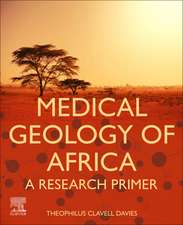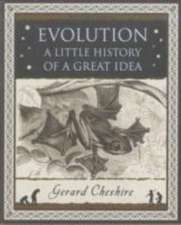Understanding Metaphors in the Life Sciences: Understanding Life
Autor Andrew S. Reynoldsen Limba Engleză Paperback – 27 apr 2022
| Toate formatele și edițiile | Preț | Express |
|---|---|---|
| Paperback (1) | 82.05 lei 3-5 săpt. | +21.58 lei 5-11 zile |
| Cambridge University Press – 27 apr 2022 | 82.05 lei 3-5 săpt. | +21.58 lei 5-11 zile |
| Hardback (1) | 297.82 lei 3-5 săpt. | |
| Cambridge University Press – 27 apr 2022 | 297.82 lei 3-5 săpt. |
Din seria Understanding Life
-
 Preț: 85.97 lei
Preț: 85.97 lei -
 Preț: 81.23 lei
Preț: 81.23 lei -
 Preț: 75.80 lei
Preț: 75.80 lei -
 Preț: 76.21 lei
Preț: 76.21 lei -
 Preț: 79.14 lei
Preț: 79.14 lei -
 Preț: 75.80 lei
Preț: 75.80 lei -
 Preț: 74.77 lei
Preț: 74.77 lei -
 Preț: 76.66 lei
Preț: 76.66 lei -
 Preț: 75.05 lei
Preț: 75.05 lei - 5%
 Preț: 98.89 lei
Preț: 98.89 lei -
 Preț: 81.23 lei
Preț: 81.23 lei -
 Preț: 75.86 lei
Preț: 75.86 lei - 5%
 Preț: 77.16 lei
Preț: 77.16 lei -
 Preț: 81.23 lei
Preț: 81.23 lei -
 Preț: 104.10 lei
Preț: 104.10 lei -
 Preț: 104.10 lei
Preț: 104.10 lei -
 Preț: 103.18 lei
Preț: 103.18 lei -
 Preț: 103.91 lei
Preț: 103.91 lei -
 Preț: 103.18 lei
Preț: 103.18 lei -
 Preț: 104.92 lei
Preț: 104.92 lei -
 Preț: 104.92 lei
Preț: 104.92 lei -
 Preț: 102.64 lei
Preț: 102.64 lei -
 Preț: 107.02 lei
Preț: 107.02 lei -
 Preț: 103.28 lei
Preț: 103.28 lei
Preț: 82.05 lei
Nou
15.70€ • 16.33$ • 12.96£
Carte disponibilă
Livrare economică 24 martie-07 aprilie
Livrare express 08-14 martie pentru 31.57 lei
Specificații
ISBN-10: 1108940498
Pagini: 150
Ilustrații: 15 b/w illus.
Dimensiuni: 128 x 177 x 10 mm
Greutate: 0.25 kg
Ediția:Nouă
Editura: Cambridge University Press
Colecția Cambridge University Press
Seria Understanding Life
Locul publicării:Cambridge, United Kingdom
Cuprins
1. Metaphors and science; 2. Background metaphors: agents, machines, and information; 3. Genes and genomes: agents, codes, programs, blueprints, and books; 4. Proteins: machines, messengers, and team players; 5. Cells: factories, computers, and social organisms; 6. Evolution: natural selection, the tree of life, and selfish genes; 7. Ecology: the balance of nature, niches, ecosystem health, and gaia; 8. Biomedicine: genetic engineering, genome editing, and cell reprogramming.
Recenzii
'In this beautifully written, highly accessible, and captivating work, Reynolds reveals the incredible extent to which scientific methods and descriptions in biology, the life sciences, and medicine are infused with metaphors. Interweaving the rich history and philosophy of the uses of these metaphors over time, their many implications for scientific reasoning, understanding, and the ethical and political dimensions of science itself are perceptively explored, with wonderful clarity and across an encyclopedic range of examples. Metaphors afford telling insight, opening doors to further inquiry and closing others. Is your genome software? Are enzymes molecular machines? Does nature select some traits over others, thereby constructing the tree of life? The fascinating world of metaphors in science comes to life on every page.' Anjan Chakravartty, University of Miami, USA
'I read Lakoff and Johnson's book Metaphors We Live By in the 1980s, and it was eye opening. Andrew Reynolds' book, which should be called Metaphors Science Lives By, is equally eye opening. Metaphors shape the way we live in the world. In science, they shape the way we understand the world. This can have huge implications for our lives, for better or for worse. How does this process of understanding work, especially in the life sciences? This book deals with the essential role of metaphors in this process. Written in an admirably clear style, Reynolds makes us aware of the power of metaphor, but also its dangers and pitfalls. It is an essential read for everybody interested in understanding how science and science communication work with and through metaphors. Importantly, it also dispels some common misunderstandings about the role of metaphors in science.' Brigitte Nerlich, University of Nottingham, UK
'Understanding Metaphors in the Life Sciences takes us from genes to cells, and up to the vast evolutionary tree of life, showing how science depends overwhelmingly on metaphor for understanding, for advance, for communication. A very important book.' Michael Ruse, Florida State University, USA
Descriere
Covering a range of metaphors from a diverse field of sciences, from cell and molecular biology to evolution, ecology, and biomedicine, Understanding Metaphors in the Life Sciences explores the positive and negative implications of the widespread use of metaphors in the biological and life sciences. From genetic codes, programs, and blueprints, to cell factories, survival of the fittest, the tree of life, selfish genes, and ecological niches, to genome editing with CRISPR's molecular scissors, metaphors are ubiquitous and vital components of the modern life sciences. But how exactly do metaphors help scientists to understand the objects they study? How can they mislead both scientists and laypeople alike? And what should we all understand about the implications of science's reliance on metaphorical speech and thought for objective knowledge and adequate public policy informed by science? This book will literally help you to better understand the metaphorical dimensions of science.















